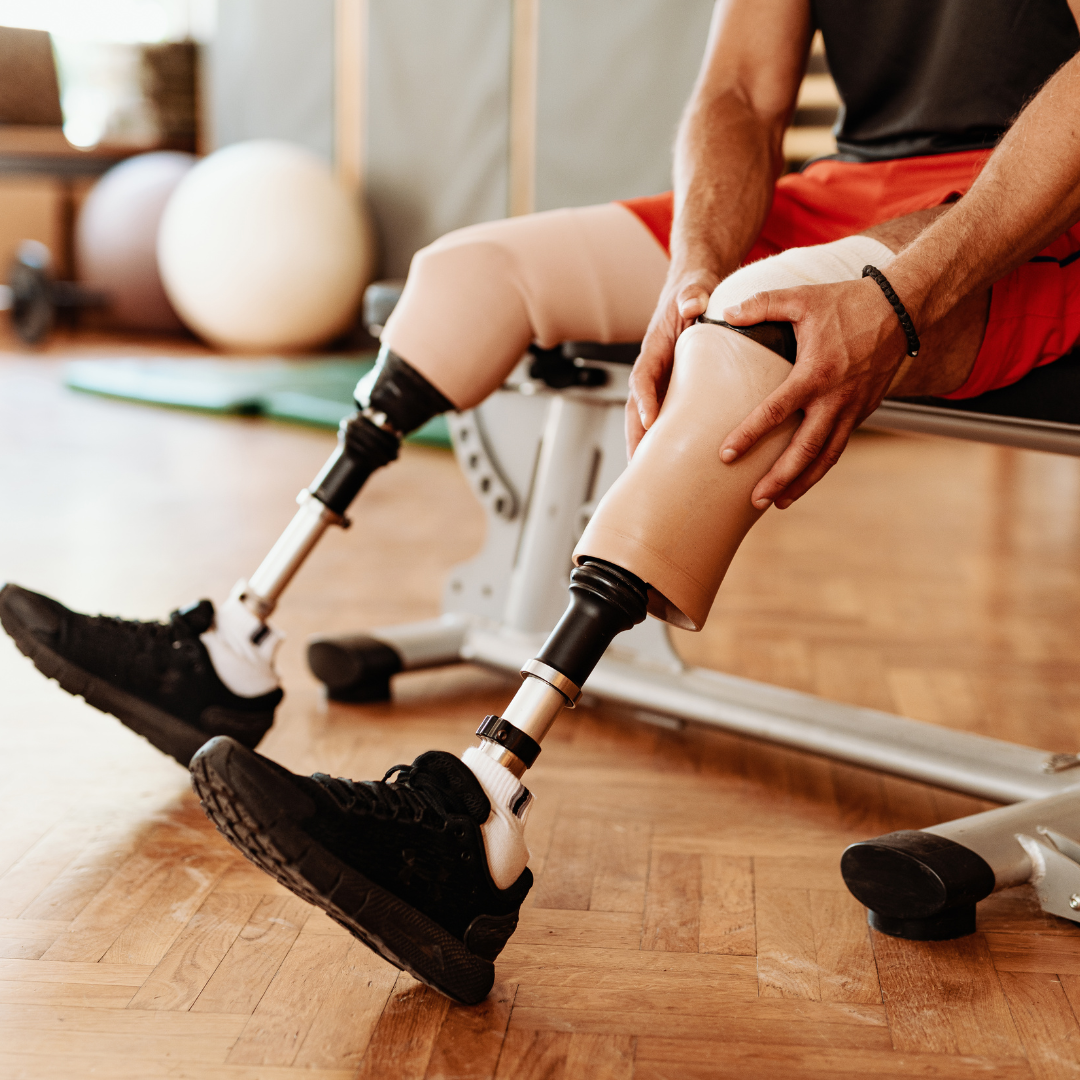
 PROSTHETISTS: A prosthetist designs, measures, fits, and adapts orthopedic braces, appliances, or prostheses, such as limbs or facial parts for patients with disabling conditions. This includes artificial legs and arms for people who have had amputations due to conditions such as cancer, diabetes, or injury. A prosthetist's job is to aid a patient's movement, correct deformities, and relieve discomfort.
PROSTHETISTS: A prosthetist designs, measures, fits, and adapts orthopedic braces, appliances, or prostheses, such as limbs or facial parts for patients with disabling conditions. This includes artificial legs and arms for people who have had amputations due to conditions such as cancer, diabetes, or injury. A prosthetist's job is to aid a patient's movement, correct deformities, and relieve discomfort.
Have you considered?
PHYSICAL THERAPIST: A physical therapist (PT) is an allied health professional who helps to rehabilitate a patient while recovering from surgery, or a patient who has been injured or incapacitated in some way by an accident, illness, or stroke. A physical therapist may see patients in a medical office or hospital setting, depending on the career path chosen by the physical therapist.
ORTHOPEDIC SURGEON: Orthopedic surgery is the medical specialty that encompasses the treatment of musculoskeletal injuries and conditions. Orthopedic surgeons treat a variety of problems in all ages of patients. Orthopedics is the study of the musculoskeletal system. Orthopedic doctors help patients with the diagnosis of problems associated with the bone, joints, ligaments, tendons, muscles, and nerves of the body.
ATHLETIC TRAINERS: Athletic trainers work with sports teams, students, workers, or any patients or clients who may need help recuperating from an injury or need physical rehabilitation. In addition to helping people recover from injuries, they also help athletes (or other groups) prevent injuries and optimize athletic or sports performance with strength training and conditioning.

Prosthetists must complete a master's degree in orthotics and prosthetics. They must also complete a residency before they can become certified. These two to three-year programs train students in assessing clients' needs and fitting them with the best device for their condition. Prosthetists are required to stay up to date on the latest developments in orthotics/prostheses and educate their clients on how to best use and care for their orthotics.
Today’s entrants to this profession need a post-baccalaureate degree from an accredited physical therapy program. All States regulate the practice of physical therapy, which usually requires passing scores on national and State examinations. Among the undergraduate courses that are useful when one applies to a physical therapist education program are anatomy, biology, chemistry, physics, social science, mathematics, and statistics.
To become an orthopedic surgeon you must first get a bachelor’s degree. You must then go to medical school for four years and graduate with your M.D. or your D.O. degree. You must then do a 4-year residency and a one-year fellowship to focus on a specialty such as sports medicine. Becoming an orthopedic surgeon takes a little time, but orthopedic surgery is a terrific medical specialty, and the education and training is rewarding.
Athletic trainers hold a minimum of a bachelor's degree, while many have master's degrees, with a major in athletic training. Athletic Trainers must pass a comprehensive exam that tests in six practice domains including injury prevention, clinical evaluation and diagnosis, immediate care, and professional development. Athletic Training is not a 9-5 job. Your hours are dependent upon co-workers (coaches) and administration and the athletes you are being paid to assist.
Utah Earning Potential Averages For Prosthetists: (Jobs.Utah.Gov)
|
Annual Total Openings: |
61 |
|---|---|
|
Annual Growth Rate: |
6.43% |
|
Median Annual Wage: |
$79,300 |
|
Inexperienced Annual Wage: |
$49,900 |
|
Education: |
Master's Degree |
Utah Earning Potential Averages For Physical Therapists: (Jobs.Utah.Gov)
|
Annual Total Openings: |
150 |
|---|---|
|
Annual Growth Rate: |
2.8% |
|
Median Annual Wage: |
$81,280 |
|
Inexperienced Annual Wage: |
$63,120 |
|
Education: |
Doctoral/Professional Degree |


